Source:

BUSINESS DAY TV: Comair expects better second half as new strategy kicks in
by Transcript service,
2016-02-17 12:54:16.0
ERIK Venter is CEO of Comair and Craig Pheiffer is from Absa Wealth & Investment Management.
BUSINESS DAY TV: Despite an uptick in passenger numbers, Comair’s interim headline earnings per share took a 65% hit due to a now expired dollar oil hedge, while revenue for the period dipped 5%. CEO Erik Venter joins us now in the News Leader studio. And still with us is Craig Pheiffer from Absa Wealth & Investment Management.
Erik, the markets have been well cautioned about the impact the rand’s depreciation was set to have on your numbers. You hold a dollar-denominated loan which you’ve had to revalue. The significant reduction in the dollar price of oil has not been fully realised because of that weakness as well. How are you managing the situation and mitigating against that possible risk within that arena?
ERIK VENTER: The issue we had with that one aircraft loan — with US Exim, which is the US Export-Import Bank-backed loan — (is that) we don’t have the flexibility to exit it and go into a rand-based loan. But having said that, it’s still got another seven years to run. We don’t know where the exchange rate will go over the next seven years, so in all probability we’ll end up reversing that adjustment again somewhere down the track. So it’s a non-cash-flow adjustment, it just happens to be the impact of the exchange rate on December 31, so we’re not overly concerned about that one. Unfortunately one has to put it through the income statement, but that’s just the way it goes. Those are the downs that come with the ups. But on the other side of the coin the interest rate is 2% on that loan so it’s not so bad.
The other thing to keep in mind is that we have all these aircraft that are effectively in the market. They’re dollar assets but we’ve valued them at the price at which we brought them into the country. So the bulk of them are sitting at an exchange rate of about 8.5 and in terms of our asset value — we’re actually, in terms of realisable value, still undervalued by about 70% now. Yes, we show on the one side of the transaction being the financing on one aircraft but we haven’t done anything about the other six aircraft that are sitting at way below realisable value.
BDTV: Yes, of course. Another thing that’s hit you is a strategy that backfired, which was the dollar oil hedges you contracted in mid-2014. You’ve emphasised that now and seen the back of that with those contracts having expired last December. Moving forward, though, are you not now missing a possible opportune investment?
EV: It would be great if we could buy forward at the current spot price — that would be wonderful. But unfortunately we have to buy forward on the curve, and the forward curve is now quite steep again. And if we were looking at buying a year ahead we’d be taking a gamble at around $45 a barrel, which in our view we’re probably going to see a relatively low fuel price for probably another 18 months or so. So we’re not in a hurry to go and gamble on the forward curve, it’s just too steep for our comfort.
BDTV: Absolutely. Craig...
CRAIG PHEIFFER: Erik in your space, (it’s a) very competitive local environment. You’ve got the national carrier that does its own thing that operates in the space, you’re subject to the vagaries of the oil price, and even hedging, as you say, is a gamble. What are the other things that you’re doing? You have the slow lounges, the travel ... what is the focus on that to kind of smooth out those kinds of earnings?
EV: Yes, we have put a lot of emphasis onto the other businesses. We are targeting to get to a point where at least two-thirds of our profit would be airline and one-third at least from the other businesses. We’re slowly but surely getting there. We have quite a lot of challenges in those areas, but we’ll overcome them eventually. We would have liked to see those numbers grow significantly further in the last few months but we’ve had some challenges in terms of acquiring space for the lounge expansion and those kinds of things. But we’ve got some very nice plans on the cards, it’s just a matter of trying to get them implemented and getting that revenue to come through. But I believe we’re on target for two, three years’ time where we would see at least a third of our profits coming from our other businesses.
BDTV: In addition to that you’ve got your focus on that two-thirds of the business instead, with the … continuance of your fleet upgrade programme. Talk us through the kind of (progress) you’re making there and especially in the context ... where one of the primary questions is whether or not you’re now feeding into the surplus capacity within the industry.
EV: The fleet upgrade programme has really all been replacing older aircraft with newer aircraft, so yes, as we are replacing we are bringing in slightly larger aircraft, but it doesn’t create any significant capacity movement as such. But on the individual aircraft basis we’re obviously getting the costs spread over a lot more seats by bringing in the larger aircraft. To date we’ve replaced the entire Kulula fleet so we’ve now got a full fleet of 737-800s in Kulula. We’ve brought in a few leased 737-800s into the BA fleet already, but on Sunday our very first brand new British Airways 737-800 arrived from the Boeing factory and we’ve got another one coming in October and that will really be the last of the initial order of eight aircraft that we placed in 2011. After that we’ll be looking at where else to acquire on an opportunistic basis good-value aircraft until we get to the 2019 deliveries, which start with the next generation of 737-800s coming in.
BDTV: Feeding into what demand exactly? Because this all then speaks in turn to just how much of a profitable margin you get to enjoy.
EV: It does all align to the retirement of aircraft again so as I mentioned before it doesn’t create a significant growth in our capacity, it simply brings in much more efficient aircraft and a little bit of capacity growth in the process. We have seen a continuous growth in our volumes. We saw the market grow over the 12-month period by about 12.8% and in December we grew about 13% year on year in passenger numbers. So definitely we’ve moved very much from a price-driven strategy to a volume-driven strategy and we’ve been quite aggressive in that stance, and it’s paying off very nicely, obviously helped by having the larger aircraft as well. So we could really play it either way.
The first quarter was rough because we were changing the strategy around, the second quarter was extremely good because we’d moved into that new strategy, and the second half of the year should be strong on that basis.
ERIK Venter is CEO of Comair and Craig Pheiffer is from Absa Wealth & Investment Management.
BUSINESS DAY TV: Despite an uptick in passenger numbers, Comair’s interim headline earnings per share took a 65% hit due to a now expired dollar oil hedge, while revenue for the period dipped 5%. CEO Erik Venter joins us now in the News Leader studio. And still with us is Craig Pheiffer from Absa Wealth & Investment Management.
Erik, the markets have been well cautioned about the impact the rand’s depreciation was set to have on your numbers. You hold a dollar-denominated loan which you’ve had to revalue. The significant reduction in the dollar price of oil has not been fully realised because of that weakness as well. How are you managing the situation and mitigating against that possible risk within that arena?
ERIK VENTER: The issue we had with that one aircraft loan — with US Exim, which is the US Export-Import Bank-backed loan — (is that) we don’t have the flexibility to exit it and go into a rand-based loan. But having said that, it’s still got another seven years to run. We don’t know where the exchange rate will go over the next seven years, so in all probability we’ll end up reversing that adjustment again somewhere down the track. So it’s a non-cash-flow adjustment, it just happens to be the impact of the exchange rate on December 31, so we’re not overly concerned about that one. Unfortunately one has to put it through the income statement, but that’s just the way it goes. Those are the downs that come with the ups. But on the other side of the coin the interest rate is 2% on that loan so it’s not so bad.
The other thing to keep in mind is that we have all these aircraft that are effectively in the market. They’re dollar assets but we’ve valued them at the price at which we brought them into the country. So the bulk of them are sitting at an exchange rate of about 8.5 and in terms of our asset value — we’re actually, in terms of realisable value, still undervalued by about 70% now. Yes, we show on the one side of the transaction being the financing on one aircraft but we haven’t done anything about the other six aircraft that are sitting at way below realisable value.
BDTV: Yes, of course. Another thing that’s hit you is a strategy that backfired, which was the dollar oil hedges you contracted in mid-2014. You’ve emphasised that now and seen the back of that with those contracts having expired last December. Moving forward, though, are you not now missing a possible opportune investment?
EV: It would be great if we could buy forward at the current spot price — that would be wonderful. But unfortunately we have to buy forward on the curve, and the forward curve is now quite steep again. And if we were looking at buying a year ahead we’d be taking a gamble at around $45 a barrel, which in our view we’re probably going to see a relatively low fuel price for probably another 18 months or so. So we’re not in a hurry to go and gamble on the forward curve, it’s just too steep for our comfort.
BDTV: Absolutely. Craig...
CRAIG PHEIFFER: Erik in your space, (it’s a) very competitive local environment. You’ve got the national carrier that does its own thing that operates in the space, you’re subject to the vagaries of the oil price, and even hedging, as you say, is a gamble. What are the other things that you’re doing? You have the slow lounges, the travel ... what is the focus on that to kind of smooth out those kinds of earnings?
EV: Yes, we have put a lot of emphasis onto the other businesses. We are targeting to get to a point where at least two-thirds of our profit would be airline and one-third at least from the other businesses. We’re slowly but surely getting there. We have quite a lot of challenges in those areas, but we’ll overcome them eventually. We would have liked to see those numbers grow significantly further in the last few months but we’ve had some challenges in terms of acquiring space for the lounge expansion and those kinds of things. But we’ve got some very nice plans on the cards, it’s just a matter of trying to get them implemented and getting that revenue to come through. But I believe we’re on target for two, three years’ time where we would see at least a third of our profits coming from our other businesses.
BDTV: In addition to that you’ve got your focus on that two-thirds of the business instead, with the … continuance of your fleet upgrade programme. Talk us through the kind of (progress) you’re making there and especially in the context ... where one of the primary questions is whether or not you’re now feeding into the surplus capacity within the industry.
EV: The fleet upgrade programme has really all been replacing older aircraft with newer aircraft, so yes, as we are replacing we are bringing in slightly larger aircraft, but it doesn’t create any significant capacity movement as such. But on the individual aircraft basis we’re obviously getting the costs spread over a lot more seats by bringing in the larger aircraft. To date we’ve replaced the entire Kulula fleet so we’ve now got a full fleet of 737-800s in Kulula. We’ve brought in a few leased 737-800s into the BA fleet already, but on Sunday our very first brand new British Airways 737-800 arrived from the Boeing factory and we’ve got another one coming in October and that will really be the last of the initial order of eight aircraft that we placed in 2011. After that we’ll be looking at where else to acquire on an opportunistic basis good-value aircraft until we get to the 2019 deliveries, which start with the next generation of 737-800s coming in.
BDTV: Feeding into what demand exactly? Because this all then speaks in turn to just how much of a profitable margin you get to enjoy.
EV: It does all align to the retirement of aircraft again so as I mentioned before it doesn’t create a significant growth in our capacity, it simply brings in much more efficient aircraft and a little bit of capacity growth in the process. We have seen a continuous growth in our volumes. We saw the market grow over the 12-month period by about 12.8% and in December we grew about 13% year on year in passenger numbers. So definitely we’ve moved very much from a price-driven strategy to a volume-driven strategy and we’ve been quite aggressive in that stance, and it’s paying off very nicely, obviously helped by having the larger aircraft as well. So we could really play it either way.
The first quarter was rough because we were changing the strategy around, the second quarter was extremely good because we’d moved into that new strategy, and the second half of the year should be strong on that basis.


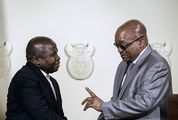
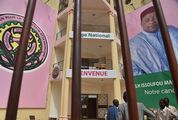
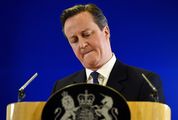



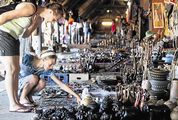
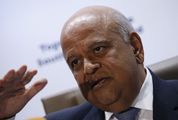
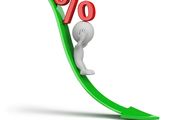










Login OR Join up TO COMMENT